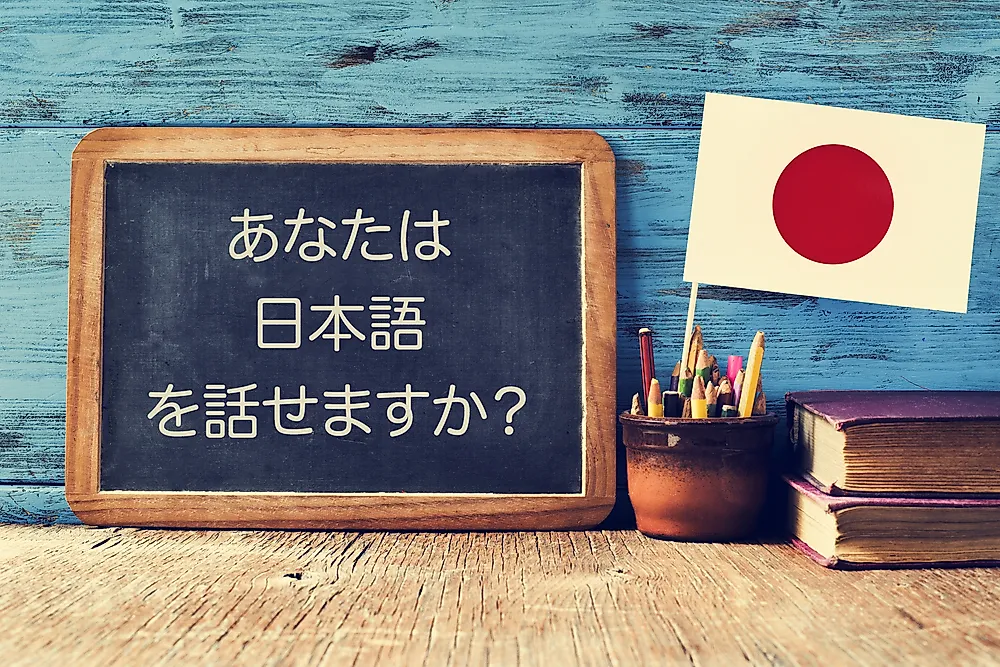Japanese the spoken language – Japanese, the spoken language, holds a captivating allure, inviting us to delve into its rich tapestry of history, culture, and linguistic nuances. From its origins to its widespread dialects, Japanese continues to enchant and intrigue, shaping the very fabric of Japanese society.
As we embark on this linguistic journey, we will explore the fascinating evolution of Japanese, unraveling the intricate interplay between Chinese characters and its unique sound system. We will delve into the grammatical intricacies that govern its structure, uncovering the secrets behind its distinctive sentence patterns and use of particles.
Historical Evolution of Japanese: Japanese The Spoken Language

The Japanese language is a complex and fascinating one, with a long and rich history. Its origins are shrouded in mystery, but it is thought to have developed from a proto-language spoken by the people of the Japanese archipelago around 300 BC.
One of the most significant influences on the development of Japanese was the introduction of Chinese characters in the 5th century AD. These characters were used to write Japanese words, and they had a profound impact on the language’s vocabulary and writing system.
Phonological Changes, Japanese the spoken language
Over time, the Japanese language has undergone a number of phonological changes. These changes include the loss of certain sounds, the merger of others, and the development of new sounds.
- One of the most significant phonological changes was the loss of the voiced consonants /b/, /d/, and /g/. These sounds were replaced by the voiceless consonants /p/, /t/, and /k/, respectively.
- Another major phonological change was the merger of the vowels /i/ and /e/. These sounds are now pronounced identically in most dialects of Japanese.
Grammatical Changes
The Japanese language has also undergone a number of grammatical changes over time. These changes include the development of new grammatical particles, the loss of certain grammatical forms, and the simplification of others.
- One of the most significant grammatical changes was the development of the particle system. Particles are used to indicate the grammatical function of words and phrases, and they play a vital role in Japanese grammar.
- Another major grammatical change was the loss of the verb suffix “-ru”. This suffix was used to indicate the past tense of verbs, but it is no longer used in modern Japanese.
Phonology and Grammar
Japanese phonology is characterized by a simple syllable structure and a relatively small sound inventory. Syllables in Japanese are typically composed of a single consonant followed by a vowel, with no consonant clusters or diphthongs. The sound inventory of Japanese consists of 21 consonants and 5 vowels.
The consonants are divided into three groups: voiceless stops, voiced stops, and nasals. The vowels are divided into two groups: high vowels and low vowels.The basic grammatical structure of Japanese is subject-object-verb (SOV). This means that the subject of a sentence comes first, followed by the object, and then the verb.
Japanese also uses a system of particles to indicate the grammatical function of words in a sentence. For example, the particle “ga” is used to indicate the subject of a sentence, while the particle “o” is used to indicate the object.Japanese
has a rich system of grammatical patterns that can be used to express a variety of meanings. For example, the passive voice is formed by adding the suffix “-rareru” to the verb stem. The causative form is formed by adding the suffix “-aseru” to the verb stem.
Dialects and Regional Variations

The Japanese language exhibits a rich tapestry of dialects, each with its unique characteristics. These variations stem from a complex interplay of geographical, historical, and cultural factors.
Factors Contributing to Dialectal Variation
- Geography:Mountainous terrain and bodies of water have historically isolated communities, fostering the development of distinct dialects.
- History:Feudal domains and regional migrations have left their mark on the language, with certain dialects preserving older forms of speech.
- Culture:Local customs, traditions, and industries have influenced the vocabulary and expressions used in different regions.
Pronunciation
Dialects vary significantly in pronunciation, particularly in vowel sounds. For example, the Tokyo dialect pronounces the “a” sound as [a], while the Kansai dialect pronounces it as [o]. Additionally, certain consonants may be pronounced differently, such as the “r” sound, which is often pronounced as “l” in some dialects.
Vocabulary
Dialects often possess unique vocabulary items that reflect local culture and history. For instance, the Tohoku dialect has words for specific types of snow and ice, while the Okinawa dialect has terms related to subtropical marine life.
Grammar
While Japanese grammar is generally consistent across dialects, there are some notable variations. For example, the Tokyo dialect uses the particle “wa” to mark the subject, while the Kansai dialect uses “ga.” Additionally, certain verb conjugations and sentence structures may differ between dialects.
Cultural and Social Significance

Japanese, as a spoken language, holds immense cultural and social significance in Japan. It embodies the nation’s values, traditions, and perspectives. The language reflects the Japanese emphasis on politeness, harmony, and respect for hierarchy.
Role in Education
Japanese is the primary medium of instruction in Japan’s education system. From kindergarten to university, students learn to read, write, and speak the language fluently. Education in Japan places a strong emphasis on language proficiency, as it is considered essential for academic success and professional advancement.
Role in Media
Japanese is the dominant language in the country’s media landscape. Television shows, movies, newspapers, and magazines are primarily produced and consumed in Japanese. The language plays a crucial role in shaping public opinion, disseminating information, and entertaining the population.
Role in Everyday Communication
In everyday communication, Japanese serves as a vital tool for social interaction and building relationships. The language’s intricate system of honorifics and polite speech reflects the Japanese cultural values of respect and consideration for others. It facilitates smooth and harmonious communication in various social settings, from formal business meetings to informal conversations.
Language Learning and Acquisition
Learning Japanese as a foreign language presents both challenges and opportunities. The unique characteristics of the language, such as its complex writing system and distinct grammatical structures, can make it a challenging endeavor. However, with proper methods and resources, learners can overcome these challenges and reap the benefits of acquiring proficiency in this fascinating language.
Various methods and resources are available to facilitate language acquisition. Formal classes, online courses, and self-study programs provide structured learning environments. Language exchange programs and immersion experiences offer opportunities for authentic language practice and cultural exchange.
Effective Language Learning Strategies
- Immerse yourself in the language:Surround yourself with Japanese through movies, music, books, and conversations with native speakers.
- Practice regularly:Consistency is key. Dedicate time each day to studying and practicing the language.
- Focus on communication:Prioritize understanding and being understood over perfect grammar and pronunciation.
- Use flashcards and spaced repetition:Enhance memorization and recall by using flashcards and spaced repetition techniques.
- Seek feedback and support:Engage with native speakers or language teachers to receive feedback and improve your skills.
Conclusion
In conclusion, Japanese, the spoken language, stands as a testament to the enduring power of human communication. Its historical evolution, diverse dialects, and cultural significance paint a vibrant portrait of a language that continues to evolve and captivate. Whether you are a seasoned linguist or simply curious about the intricacies of Japanese, this exploration has provided a glimpse into the beauty and complexity of this spoken language.
Expert Answers
What are the main challenges of learning Japanese?
Japanese presents unique challenges, including its complex writing system, which combines three different scripts, and its intricate grammar with subtle nuances.
How many dialects of Japanese are there?
There are numerous dialects spoken throughout Japan, with significant variations in pronunciation, vocabulary, and grammar. The most prominent dialects include Tokyo Japanese, Kansai Japanese, and Tohoku Japanese.
What is the role of Japanese in Japanese culture?
Japanese is deeply intertwined with Japanese culture, reflecting its values, traditions, and aesthetic sensibilities. It plays a vital role in education, media, and everyday communication, shaping the way Japanese people express themselves and interact with the world.